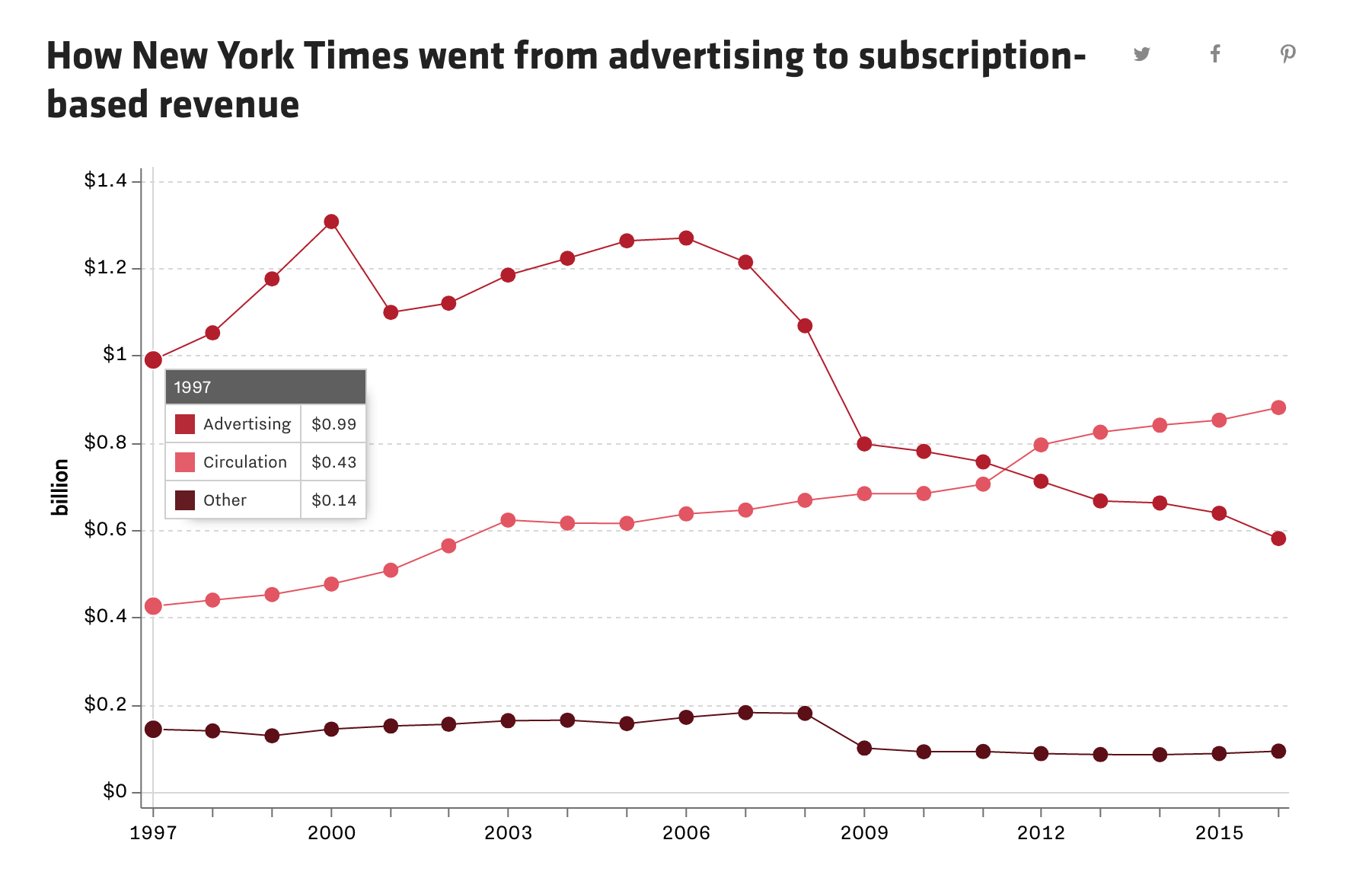Despite news of incessant layoffs, cost-cutting and retrenchment, there are occasional bright spots in the media business.
Two of those rare moments have already come this month. The first was on May 3, when The New York Times reported that it added more than 300,000 digital subscribers in the first quarter of 2017. The second came this morning, when the Financial Times reported that The Guardian — the London-based newspaper that has endured public financial struggles — now gets about as much revenue from readers as it does from advertising.
This one-two punch of happy financial news must be taken with an industrial-sized brick of salt, of course. The New York Times is bracing for layoffs later this year even as it sets its sights on the 10 million subscriber mark. And The Guardian has weathered repeated cutbacks, particularly to its U.S. division, as print and digital ads face stiff headwinds.
But both stories are a good sign for publishers seeking to build their businesses around connecting to members of their audiences directly, through subscriptions, donations and membership. As a recent analysis from Recode pointed out, The New York Times now pulls in more revenue from circulation (subscriptions plus newsstand sales) than it does from advertising. The two figures crossed sometime in 2011; since then, additional revenue from subscriptions has helped backfill the revenue losses in ad sales (though it hasn’t bridged the shortfall entirely).

(Screenshot, Recode)
The Guardian doesn’t have a similarly rosy story to tell. It’s expected to burn through $116 million this year, according to a recent report from The Telegraph (The Guardian says that number has been adjusted to $92.9 million). Executives are reportedly considering a move from The Guardian’s Kings Cross headquarters in order to head off further losses.
And other media companies, particularly those aimed at local audiences, are also having a tough time converting community journalism into subscription revenue. Circulation figures across Gannett’s USA Today Network (which owns more than 100 daily newspapers across the U.S.) actually fell in 2016, according to a recent profile from CJR, to just over $1 billion. It finished last year with 182,000 digital-only subscribers across all of its other properties, CJR reported, a 71 percent increase over 2015.
But these struggles belie an encouraging trend: Many readers seem to be willing to pony up for access to information in an age where information is ubiquitous and free. This point was underscored recently by media executive David Skok in an essay (republished here) that called the emerging shift toward subscription-based models the “most exciting period” for digital journalism:
It is an exciting time to be in journalism. Perhaps for the first time ever, it is our readers — not our advertisers — who are determining our fate. The implications of this change trickle down from the boardroom to the newsroom in profoundly positive ways. When you’re assigning stories not for clicks but for loyalty and retention, the journalism and the community will be better for it.
Meanwhile, the industry writ large is seeing more digital media businesses aimed more at inspiring reader loyalty — and thus reader support — than they are at ginning up ad revenue at scale. The founders of The Information and Axios have both fulminated publicly against the proliferation of media designed to elicit cheap clicks. Joshua Topolsky, the founder of The Outline, has also railed against what he calls “the problem” of digital media — using massive audiences as a proxy for actual value to readers.
It’s way too early for executives to dust off their hands and declare the business model for journalism totally fixed. But there may be reason to hope that national publishers are beginning to find an equilibrium after years in the financial wilderness.






